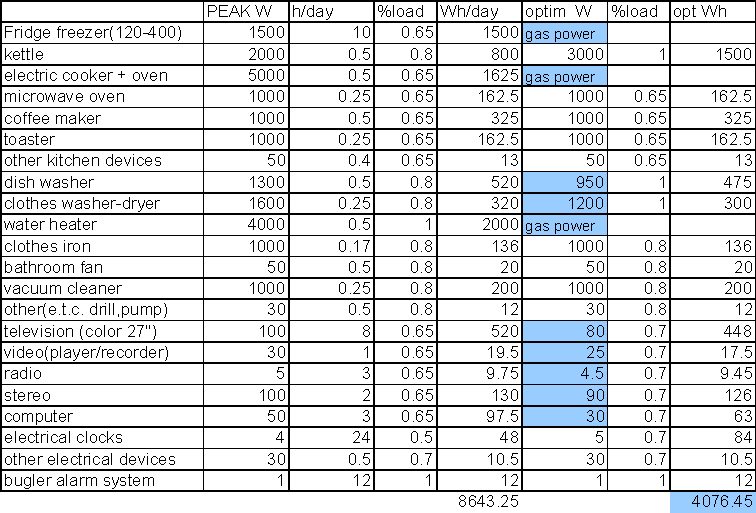Electricity is the highest grade of energy used in a house. Much thought we appreciate its quality, we would rather have the daily needed quantity been reduced. According to UK Electricity Organisation, a typical UK household consumes 11.8 kWh per day, if electricity isn't going to be used for space heating. Cooking is responsible for the largest part of electricity consumption, followed by lighting and other domestic electrical appliances.
When we talk about the need for lighting to be efficient many people think immediately of energy conservation or sometimes even of energy management. But energy efficient lighting is more than that, since its principal purpose is to enable people to see properly.
Therefore, we need of a low-energy consuming installation capable of producing adequate amount of illuminance.

Illuminance (lux) is the installed lighting wattage (efficacy of source in Lumens per Watt) multiplied with an Utilisation Factor, then multiplied with an Maintenance Factor and finally divided by the floor area. The commonly used incandescent lamp produces 6.3 lux for each watt per square meter, a colour-corrected mercury lamp produces 22 and a high-efficient fluorescent can produce 32. A possible daily consumption of an average flat is shown in the table below:
Using compact 2D-shape and 2L fluorescent lamps, we can reduce the daily demand from 4.88 kWh to 0.884 kWh. Those high-efficient fluorescent lamps aren't used widely in the domestic sector yet, due to their unfamiliar appearance and to their capital cost.
Their 2-times more life period however balances the extra initial capital cost.

Using utilisation profiles provided by the UK Department of Energy and our common life experience, we have created a list of a usual household electrical demand and estimated a possible daily consumption of 8.6 kWh. Then, we substituted some appliances by gas-powered ones; energy-efficient ones substituted some other appliances and we came to a daily consumption of almost 4.1 kWh, as shown in the table below: (all the changes are marked with blue colour)